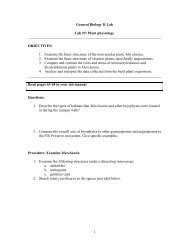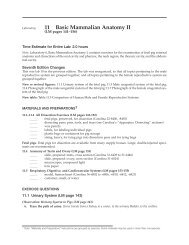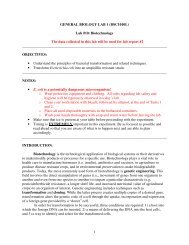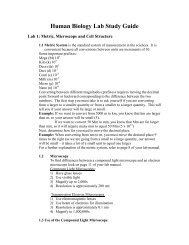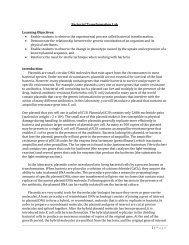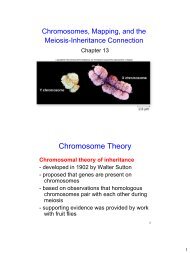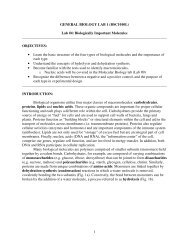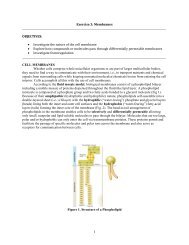Chapter 17. The origins of life and Precambrian evolution
Chapter 17. The origins of life and Precambrian evolution
Chapter 17. The origins of life and Precambrian evolution
You also want an ePaper? Increase the reach of your titles
YUMPU automatically turns print PDFs into web optimized ePapers that Google loves.
EVOLUTION/LECTURE1<br />
10.- Early evidence <strong>of</strong> cells<br />
10.1.- Once self-replicating systems evolved on the Earth, at least one <strong>of</strong> them adapted<br />
to the use <strong>of</strong> DNA to store heritable information <strong>and</strong> to the use <strong>of</strong> proteins to express<br />
that information. This system eventually gave rise to all lineages <strong>of</strong> <strong>life</strong> on the planet<br />
today: We draw this conclusion because all <strong>life</strong> forms (except viruses) use DNA <strong>and</strong><br />
proteins. In fact, all modern organisms use them in the same way; the same<br />
20 amino acids <strong>and</strong> the same basic structure <strong>of</strong> the genetic code have been found<br />
in all creatures studied to date. Thus, we apply the principle <strong>of</strong> parsimony to infer<br />
that all organisms share common ancestor<br />
10.2.- Because another shared feature <strong>of</strong> all extant <strong>life</strong> is the existence <strong>of</strong> cells, we<br />
also infer that the common ancestor was a cellular form. <strong>The</strong> advantages <strong>of</strong><br />
cellular membranes, as well as internal organellar membranes would have been<br />
enormous. Cells allow for compartmentalization. This allowed <strong>life</strong> to accumulate<br />
its necessary constituents in much higher concentration than they are found free<br />
in solution. Cells allowed genotypes <strong>and</strong> phenotypes to be linked<br />
10.3.- <strong>The</strong> first place we might look in trying to identify the ancestral cells is the fossil<br />
record. <strong>The</strong> oldest fossils definitively established as those <strong>of</strong> living organisms are<br />
3.465 billion years old (Fig. 14.15). <strong>The</strong>se fossils come from Western Australia. they<br />
show simple cells growing in short filaments<br />
Figure 14.15.: <strong>The</strong> oldest known fossils <strong>of</strong> living organisms. <strong>The</strong><br />
fossils show filaments composed <strong>of</strong> individual cells lined up like<br />
beads <strong>of</strong> a string<br />
file:///E|/CH17-PRECAMBRIAN-SPRING-2008/CHAPTER%2017_SPR_2008.HTML[12/8/2011 2:57:27 PM]



